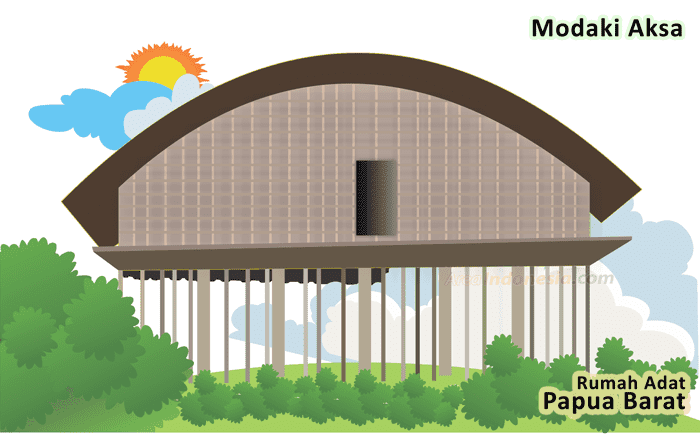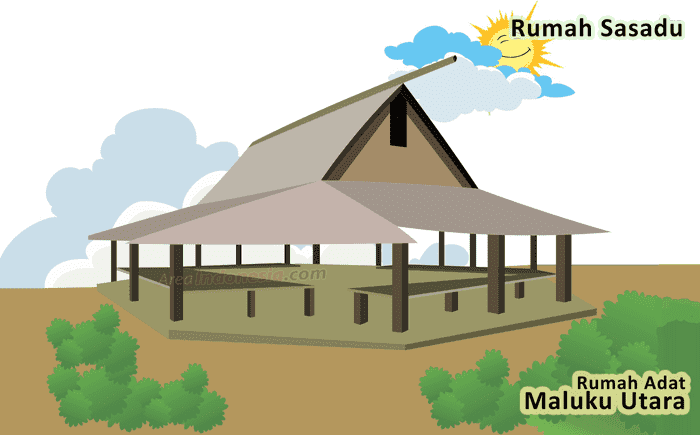North Maluku Province was formed in 1999 where previously there was only Maluku Province on Maluku Island. As for West Papua became a new province in 2003, where previously it was still 1 (one) province with Papua Province.
Traditional houses in the Maluku islands do not function as daily residences, but as shared houses used for traditional gatherings, both official and unofficial. Both Moluccan traditional houses and North Maluku traditional houses are made in open form.

Unlike traditional houses in Maluku, Papuan traditional houses are closed. This is in accordance with the natural conditions of Papua in the form of mountains. They do not make windows in the house so that the cold mountain breeze does not enter the house so that the residents feel warm.
Papuan Traditional House
Papuan traditional houses are honai houses, which have circular walls, with dome-shaped roofs (half balls) so that they look like mushrooms from the outside.
Honai Traditional House

This house has only one small door and has no windows at all. In the middle of the room, there is a place to light a bonfire to warm the room. The floor of the honai house is from the ground but there is an upper floor made of boards, which is used as a bed. In 1 (one) area, there is a group of families who establish honai together.
West Papua Traditional House
Modaki aksa is the home of West Papuans. Usually this house is used by residents who live in mountainous areas. All raw materials for building this modaki aksa traditional house come from the surrounding nature.
Modaki Aksa Traditional House

This house is in the form of a stage with a large number of wooden poles. Therefore, this house is also often referred to as a thousand-legged house. The battery mod house is made high to avoid attacks by wild animals. This ADA house has no windows to keep its residents feeling warm.
Moluccan Traditional House
Rumah baileo is a traditional house in the province of Maluku. Baileo house is not a residential house, but a traditional house for traditional ceremonies, community deliberations or religious activities. The house is in the form of a stilt house and is open.
Baileo Traditional House

The roof of the baileo house is triangular, which is made of coconut leaves or sago leaves, while the pole is made of coconut trunks and the floor is made of boards. Baileo house has 3 (three) stairs, namely at the front, left and at the back of the building. On the front steps there is a pamali stone for placing offerings.
North Maluku Traditional House
The Sahu tribe in West Halmahera, North Maluku, often gathers, eats together and carries out traditional activities at the sasadu house.
Sasadu Traditional House

The sasadu house is an open house without walls and doors, but only pillars. The poles are not nailed, but use wooden pegs and ropes. The roof of the Sasadu house is made of woven sago leaves and the floor is made of cement which is slightly higher than ground level.
Berikan komentar bro/sist